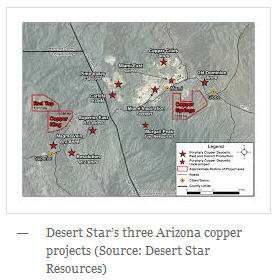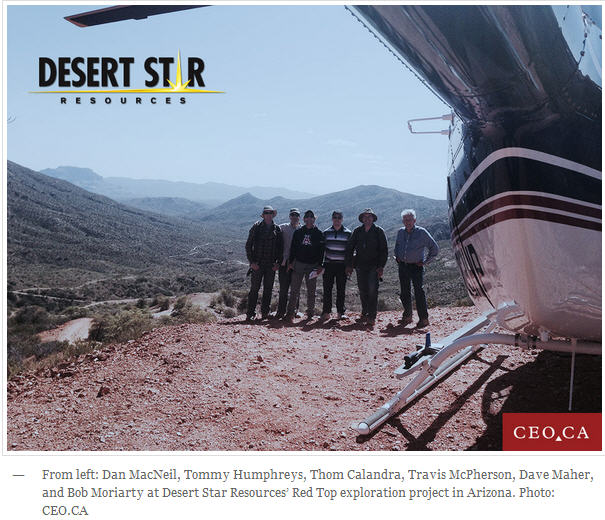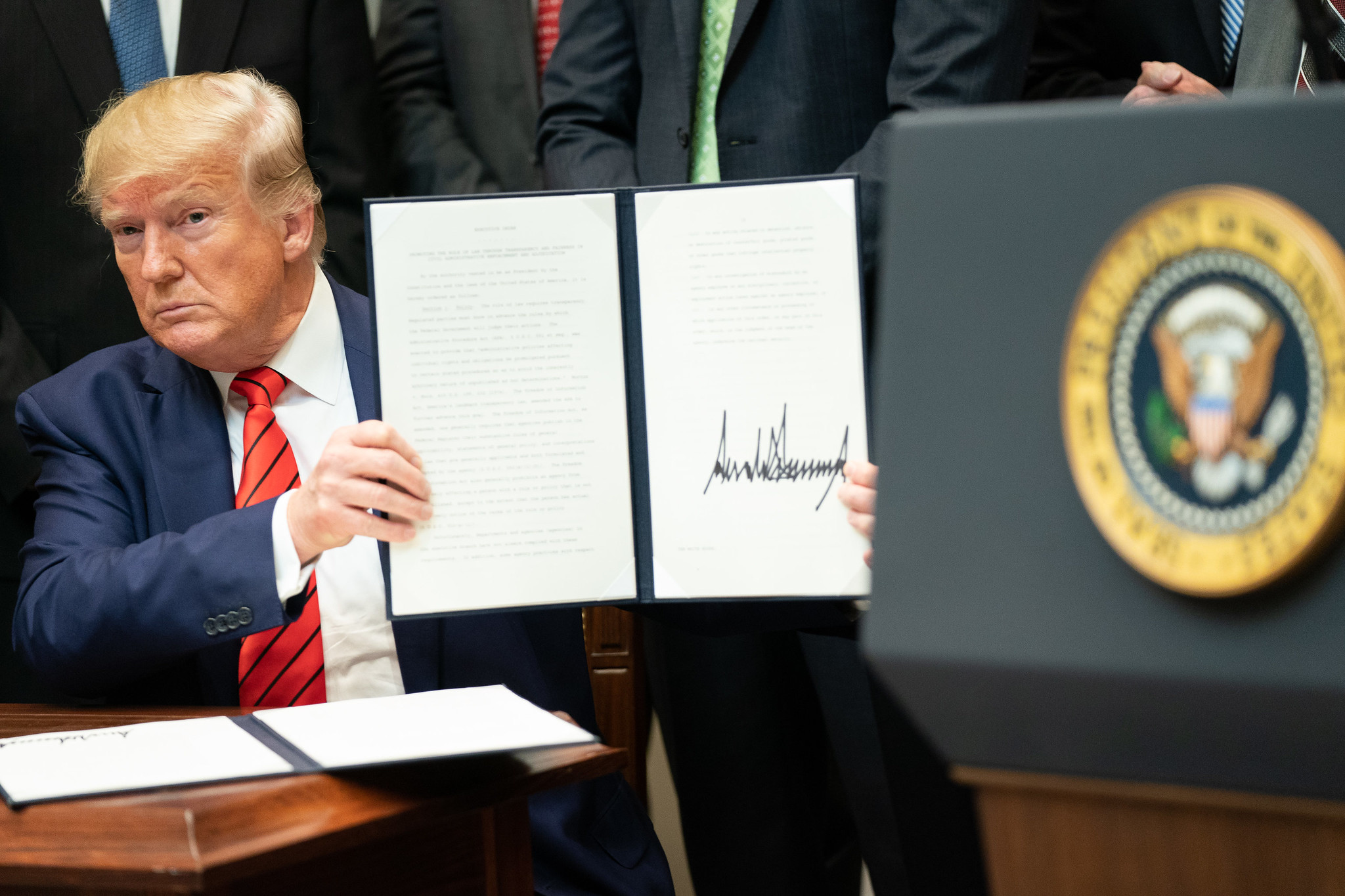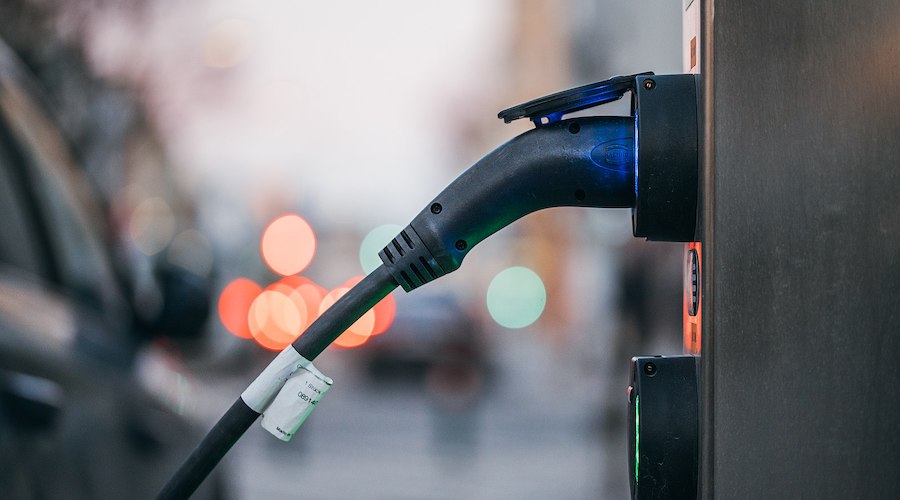Potential copper fortunes under cover next to Arizona’s largest open pits
A recent tour of the Globe-Miami copper mining district between Phoenix and Tucson, Arizona provided four natural resource writers with an appreciation of the massive scale of mining operations in the region. 
The Globe-Miami district spans roughly 30km from west to east and is almost entirely composed of open pits, heaps, tailings, haul roads, processing plants and smelters, and has been home to mining operations since as early as 1878.
Our host on the trip, Desert Star Resources(DSR:TSXV), has optioned three properties proximal to existing mines, which they believe could host rich copper resources at depth.
Executives from Desert Star were in Arizona last week showing the projects to potential partners who could help fund the drilling of its targets and we were fortunate to tag along.
Joining us were Bob Moriarty, editor of321Gold.com, Thom Calandra, editor of The Calandra Report ($110 yearly here), and hosts Vince Sorace, President and CEO of Desert Star Resources, Dan MacNeil, Project Acquisition and Development for Desert Star Resources (click here for our interview with Dan MacNeil and Dr. Alan Wainwright), and Dave Maher, Vice President of Bronco Creek Exploration, a subsidiary of Eurasian Minerals.
We met for breakfast in the town of Superior, Arizona, half way between Pheonix and Tucson, where our hosts provided an introduction to the geology of the area.
The town of Superior sits in the foothills of a mountain which contains the Resolution copper deposit (jointly owned by Rio Tinto and BHP). Currently under construction, Resolution will be the largest and most advanced copper mine in the US, and will potentially provide 25% of domestic supply. The deposit extends 2.5km deep is projected to cost north of $6 billion to get into production.
The Resolution deposit represents the future of mining in Arizona and just a few miles to the north, the Globe-Miami Mining District is home to its past and present.
It starts with KGHM’s Carlota and Rio/BHP’s Superior East mines to the west, then Capstone’sPinto Valley, Miami East (BHP), Miami-Inspiration (Freeport), Copper Cities (BHP) and finally Old Dominion (BHP) to the far east.
A few kilometres south is the Ray mine, operated by Asarco (Grupo Mexico). Ray is a massive series of pits extending up the side of a mountain and down into a valley.
Among our hosts was veteran Arizona geologist and head of Target Generation for Bronco Creek Exploration (a subsidiary of Eurasian Minerals), Dave Maher. Mr. Maher is a likeable PhD geologist who completed his thesis on the middle Tertiary extension of Laramide porphyry copper systems of southeast Arizona. He told us that Arizona has seen little new exploration work since the 1970′s, and majors have been so focused on operating their mines that the may have ignored the potential right next door, where Desert Star is now exploring.
Mr. Maher and Desert Star’s Dan MacNeil explained (in very simple terms) how they are looking for the next generation of mines in the region. The geologists believe the Globe-Miami district represents a series of tilted porphyries (think of dominos falling over). They believe that the porphyries were once vertical but subsequent faulting caused them to tilt horizontally and become dismembered (in pieces). Each of these porphyries has a root, core and roof.
The core is host to the ‘sweet spot’ with the largest tonnages and best grades for mining. The roots are thought to be too small with lower grades and the roof typically hosts the highest grades, but smaller tonnages. The Pinto Valley and Miami-Inspiration Systems are considered parts of ‘core’.
Desert Star optioned three projects from Eurasian Minerals; Red Top, Copper King and Copper Springs, which are each within a few kilometres of existing mines in the area.
We flew over Copper King and Copper Springs and landed on Red Top (which literally is a hill with a red coloured peak). Given the lack of historic and recent work done on any of these projects, we wanted to learn more about how they were identifying potential. We learned about the techniques Maher, MacNeil and their teams have been using to determine what could lurk beneath.
Copper Springs is part of a third tilted and dismembered porphyry system in the Globe Miami district, and BHP has recently been drilling adjacent to the project, while keeping their results under wraps. One historical drill hole exists on the property, which was drilled to 590 meters and did not return significant results, however Desert Star’s technical team are not deterred because they want to test bedrock, which is 1000m deep. Additionally, the historical hole is intact and can be re-opened, which could give Desert Star a head start in drilling.
Copper Springs covers an area between the largest root and roof systems in the Globe-Miami district, which means the project could host the largest core in the region.
Copper King sits 5km away from Resolution. Similar to Red Top, the surface geology of Copper King is believed to represent the top and/or side of an intact porphyry system. There is also a large 1km by 1km alteration zone on the project which is characteristic of the distal expressions of porphyry systems that are observed adjacent to the Resolution deposit.
All of the targets require deep and expensive drill testing; most in excess of 600 vertical metres.
Desert Star would like to drill 2-3 holes in each of their three Arizona projects. If any of the drill holes hits strong mineralization (looking for the potential to host a deposit with ~500Mt of ~1% copper), this small company (~$6 million market cap) could reward investors by orders of magnitude.
With copper development projects in the area often selling for several hundred million dollars or more, the upside of finding an economic deposit is huge for this small company, but so is the risk of not finding one, or running out of money before they do.
This high risk junior explorer is a tightly held (with only ~30 million shares O/S) stock that rarely trades. According to Yahoo Finance, the average daily volume over the past 3-months was just 4,833 shares.
Having just raised $1 million, the next catalyst for Desert Star is to attract a partner to help pay for drilling, or they will have to raise more money and drill the projects at their sole risk.
We appreciate our hosts for teaching us about the scale of this region.
More News
{{ commodity.name }}
{{ post.title }}
{{ post.date }}










Comments